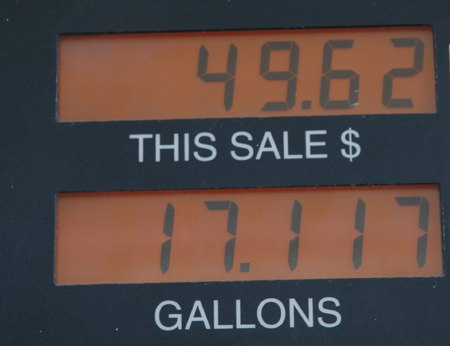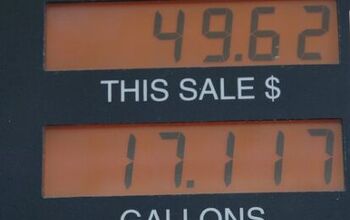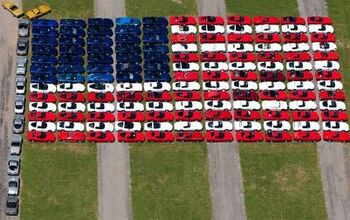The Truth About Gas
Fellow enthusiasts and SUV salesmen fear not: gasoline will be cheap again within a year or two. The price will return to the $1.00 – $1.50 range, just like it was back in December of ‘02. How could this be? Start with this: if high gas prices were solely and inexorably linked to the price of oil, why are there still enough cheap plastic toys to keep your local Dollar Store in business? Why have disposable diapers, polyester pillows, Tupperware, hula hoops, toy dump trucks and other petroleum-based products not jumped to three times the price, too? Because they’re not subject to the same political and economic pressures affecting gasoline.
When voters elect the latest gladhander to their municipal and state governments, the chemical makeup of the gas down at their local pump is not usually high on their list of priorities. BUT if you’re an agricultural activist who wants to sell corn to the government to produce Ethanol, or an environmentalist who believes you possess the magic formula for reducing baby-killing smog in western cities, well, that’s a different story. These groups are extremely effective at lobbying government at the state and local level to create a "boutique" gasoline formula to further their cause. As a result, Missouri gas isn’t good enough to burn in California, whose gas cannot legally be sold in New York City or parts of Arizona.
According to Michael Ports of the Society of Independent Gasoline Marketers of Americas, "Twenty years ago, there were two blends of gasoline offered in three octane levels, and essentially one blend of diesel fuel. Today, there are more than 18 unique blends of gasoline mandated across the nation — again offered in three octane grades — and at least three different blends of diesel fuel." Okay, let’s do the math. I make it… 59 different blends of gasoline spread out over 50 states. Just to make things that much more complicated, no one refinery produces all 59 blends of gas; nor is any refinery typically dedicated to any one grade.
OK, let's say a particular blend of gas for the Atlanta area is made in, oh, Louisiana and Mississippi. And let’s further imagine that a Category 4ish storm named something like Katrina pounds through the area, heavily damaging the refineries, destroying their ability to blend Atlantagas. So, all Atlanta has to do is call up Florida and ask for some Orlandogas, right? Well, no. Turns out the closest supplier of that particular formula of gas might be somewhere like… Europe. Until some big boats brimming with Atlanta-friendly gas cross the pond, load up a few thousand tank trucks and deliver the requisite blend, the local population is forced by legislative fiat to ponder pump prices hovering around $5.57 a gallon.
What’s more, all three octane levels of Atlantagas are all likely to have unique chemical constituents that the other 56 official blends do not. Those ingredients must be transported to the refinery. Some of them, such as Ethanol, may have special production and handling requirements, which adds time, effort and, of course, money to the equation. By the time a new refinery is ready to make Atlantagas somewhere else in the country, the original refineries may start trickling back on-line. The producer must weigh the simple advantages of riding out the storm. If they’re really unlucky, another storm (call it Rita) could be heading towards the new refining location.
Speculation is another factor adding to the recent gas price fluctuations. Back when gas was $2.00 a gallon, industry experts speculated that speculation was adding five to seven cents to a gallon of gas. In the wake of hurricanes, the “investor effect” has been both more volatile and more pronounced. Basically, some heavily moneyed folks are betting against The Truth About Oil; they’re making a short-term gamble that the price of oil will keep going up. Because this strategy has been successful in recent years, more commodities investors are doing it, which inflates the demand (and price) of oil (and gas).
These factors blend together (so to speak) to create a sub-economy so complex it takes a Congressional inquiry or four to prove that "big oil" is not guilty of price gouging. Although scoring political points seems to be our elected officials’ official business, Congress would be better advised to simplify the regulatory chaos surrounding US gas production and distribution. I'm all for clean air, but there is no way that 59 different formulas of gas are necessary to accomplish this laudable goal. Picking a winning formula, even if it is more expensive to begin with, would help prevent supply and distribution problems. During times of crisis, the ability to borrow a cup of premium unleaded from your neighbor would be a strong force against severe price fluctuations, speculation and gouging.
More by William Sargant
Latest Car Reviews
Read moreLatest Product Reviews
Read moreRecent Comments
- Spectator Wild to me the US sent like $100B overseas for other peoples wars while we clammer over .1% of that money being used to promote EVs in our country.
- Spectator got a pic of that 27 inch screen? That sounds massive!
- MaintenanceCosts "And with ANY car, always budget for maintenance."The question is whether you have to budget a thousand bucks (or euro) a year, or a quarter of your income.
- FreedMike The NASCAR race was a dandy. That finish…
- EBFlex It’s ironic that the typical low IQ big government simps are all over this yet we’re completely silent when oil companies took massive losses during Covid. Funny how that’s fine but profits aren’t. These people have no idea how business works.


































Comments
Join the conversation
[...] throughout the country. This is a great article on the subject that I'm sure you would like. The Truth About Gas | The Truth About Cars [...]